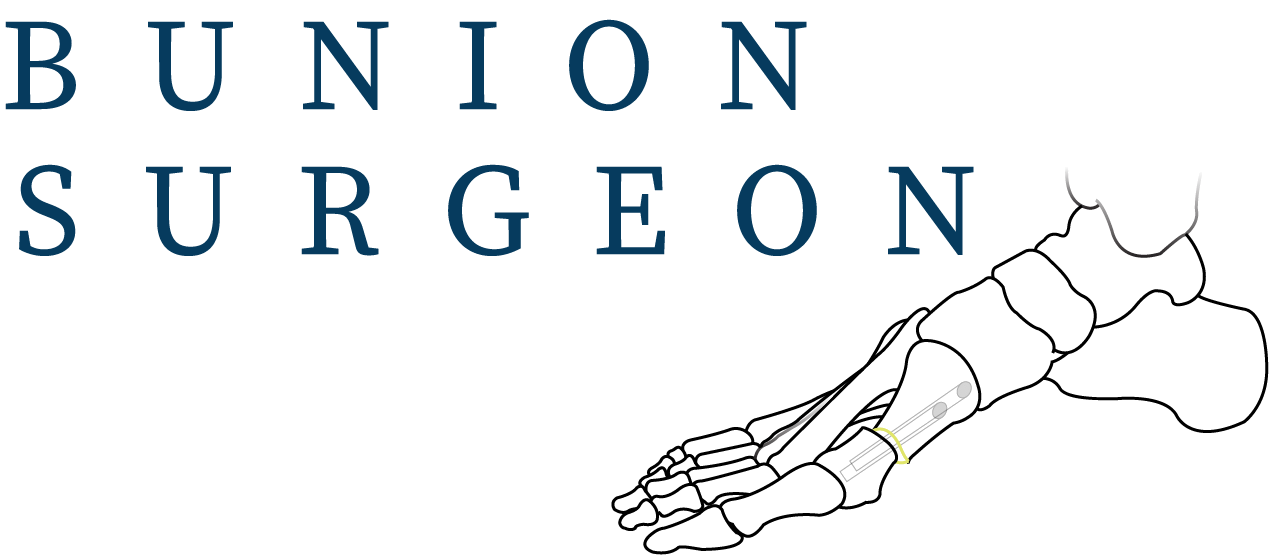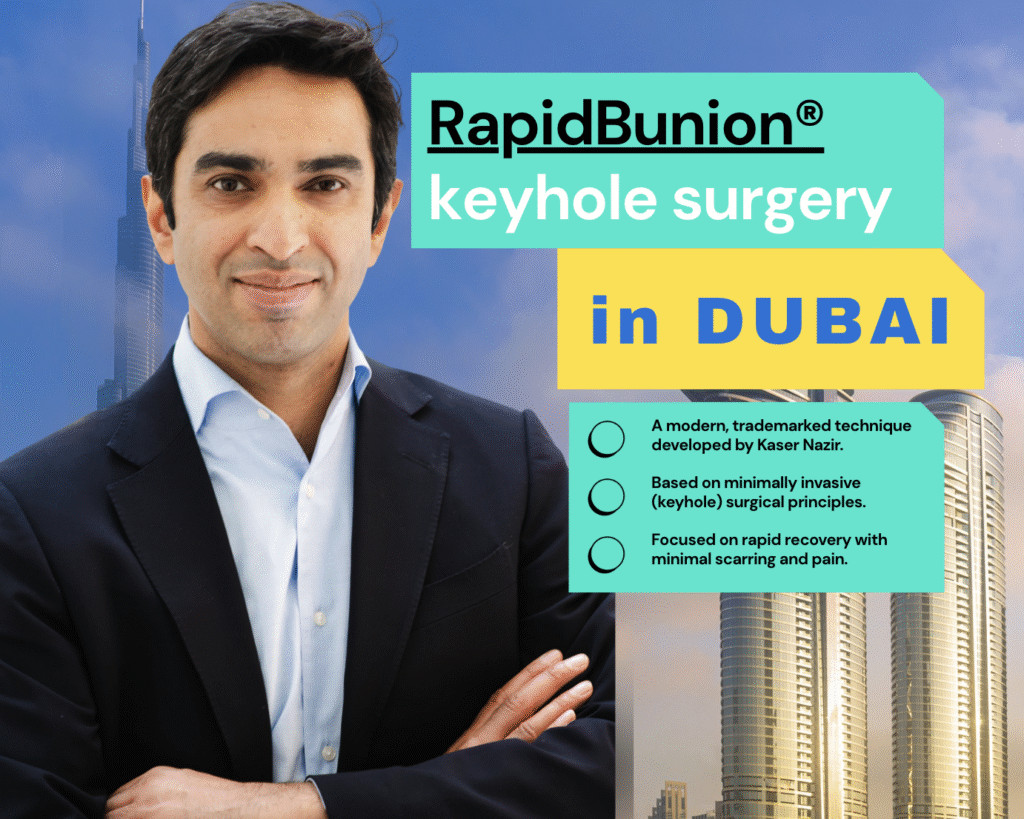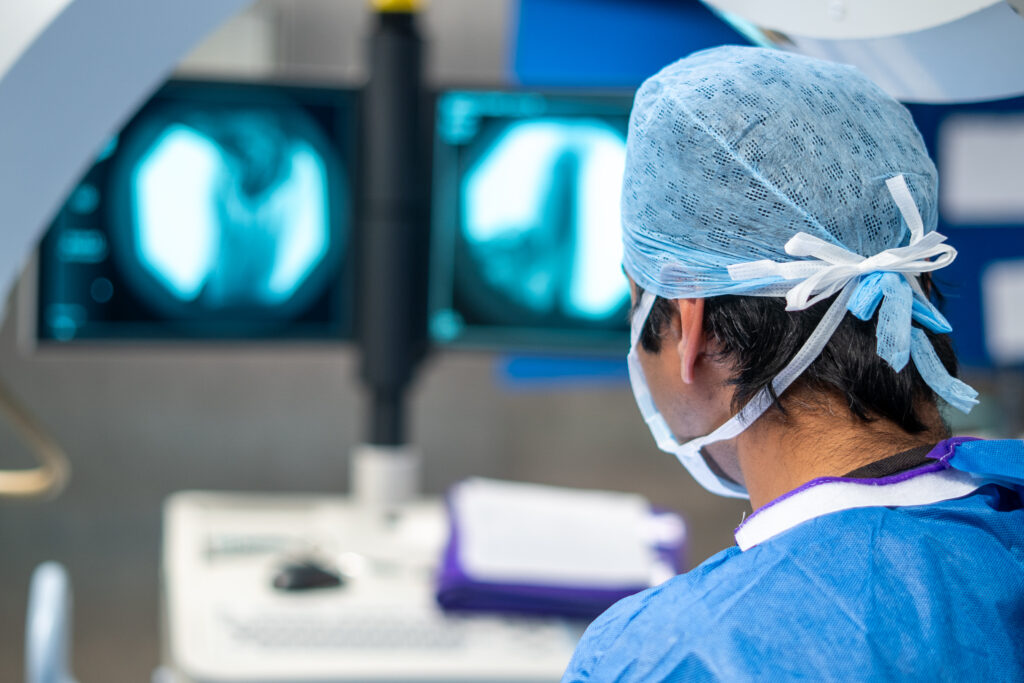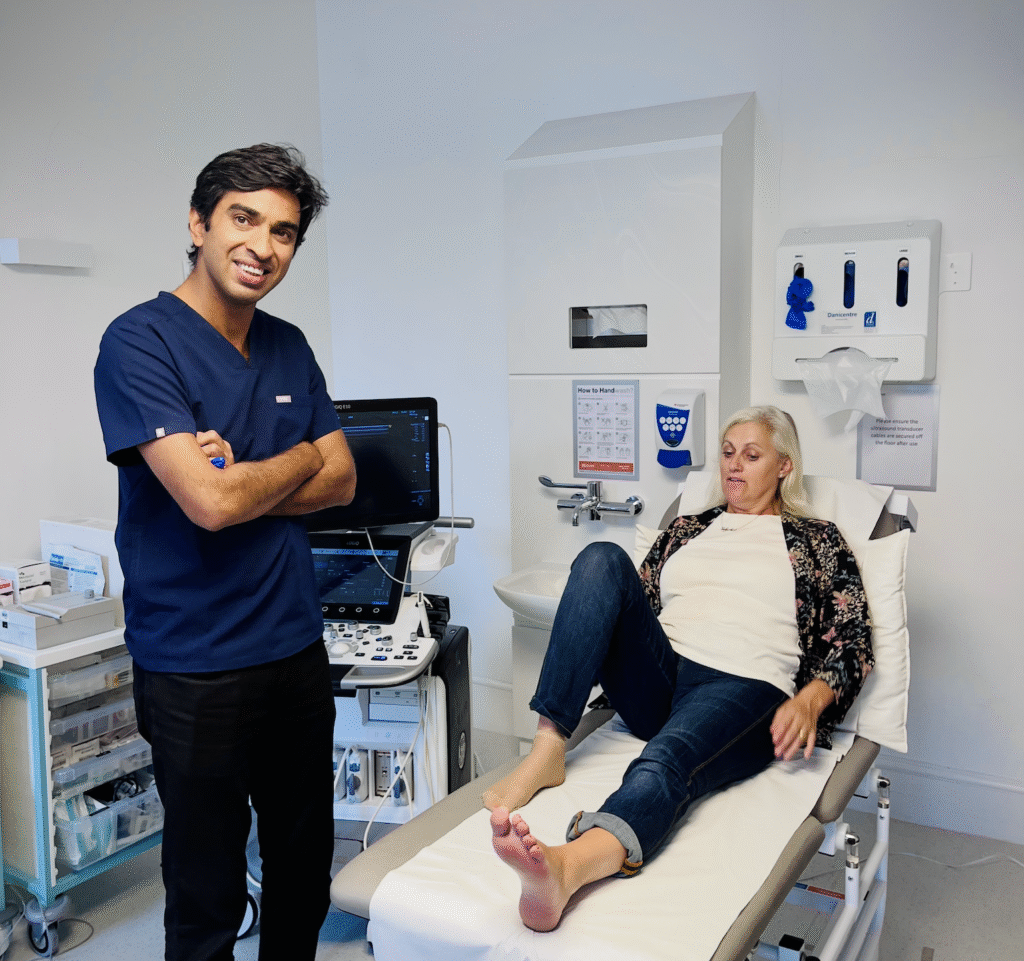I now have patients from around the world contacting me for keyhole bunion surgery, and I’ve begun to develop a reputation for performing this technique at a level that allows patients to return to their home countries relatively soon after the procedure.
On a personal note, I’ve been performing bunion surgery for nearly 20 years. In the past, I was always cautious about allowing patients to travel shortly after surgery or to remain highly mobile, especially with open surgical techniques. However, with the keyhole bunion technique, I feel much more confident, as it generally results in fewer complications—even if patients are more active or travel soon after the procedure.
Seeking Experience and Expertise Abroad
This case presentation is about a lady who came to see me from Saudi Arabia. She is an expat working on the NEOM project. I had previously operated on a colleague of hers, and she was referred to me through a personal recommendation.
She had explored options locally but found that while there was a trained surgeon in Saudi Arabia, he had only just performed his very first keyhole bunion operation a few weeks earlier. She therefore sought someone with more experience.
Experience is key, as keyhole bunion surgery is considered technically more challenging than open procedures. The skill set required is entirely different. All surgery involves a learning curve, but for this technique, the curve to clinical competence is significantly steeper. A study has shown that at least 50 cases are needed before a surgeon is considered competent enough to perform this procedure with the lowest risk of complications.
Preparing for Surgery Across Borders
This patient flew in from Saudi Arabia two days before her surgery. We had already carried out remote consultations, and she had shared her X-rays with me. We also held several video consultations in preparation for her procedure, and she had completed the full consent process in advance.
The operation was carried out under sedation on both feet simultaneously. She stayed in a nearby hotel for six days postoperatively, and the surgery was a success.
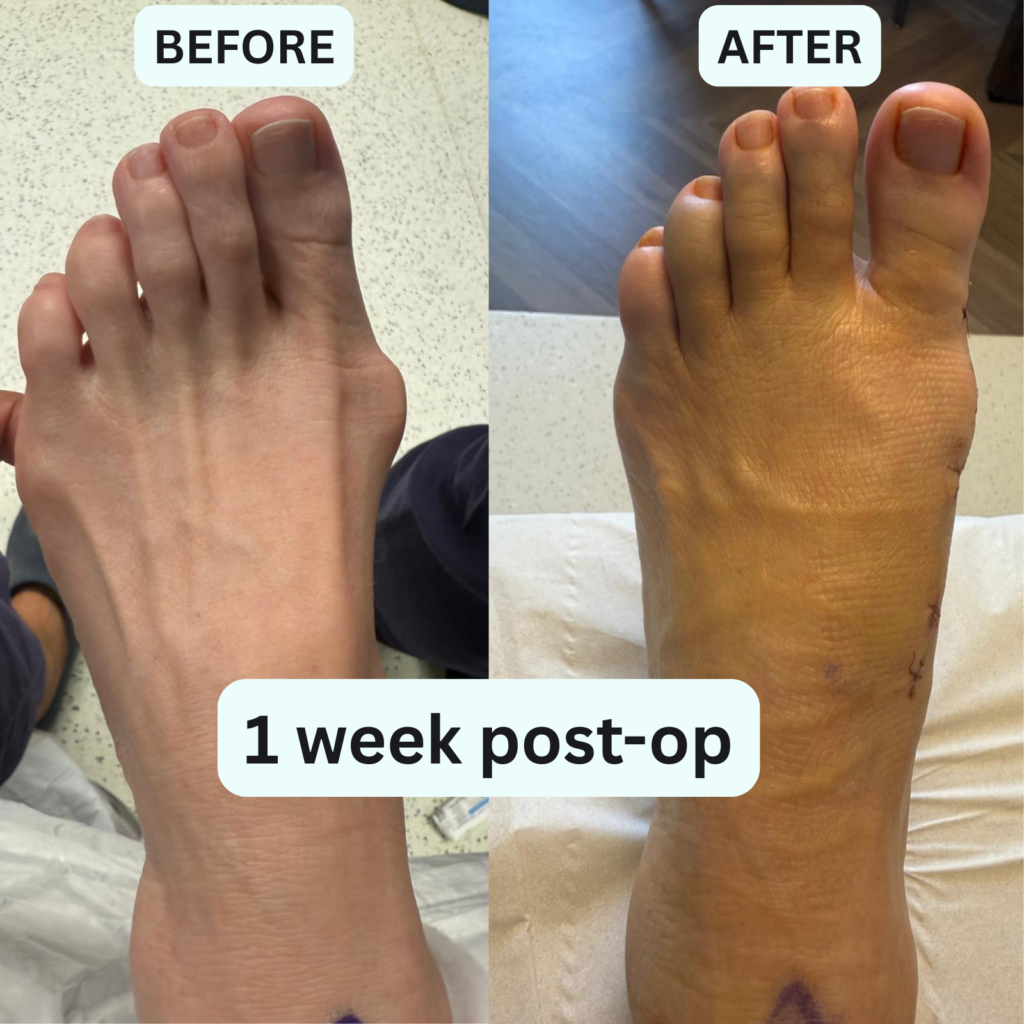
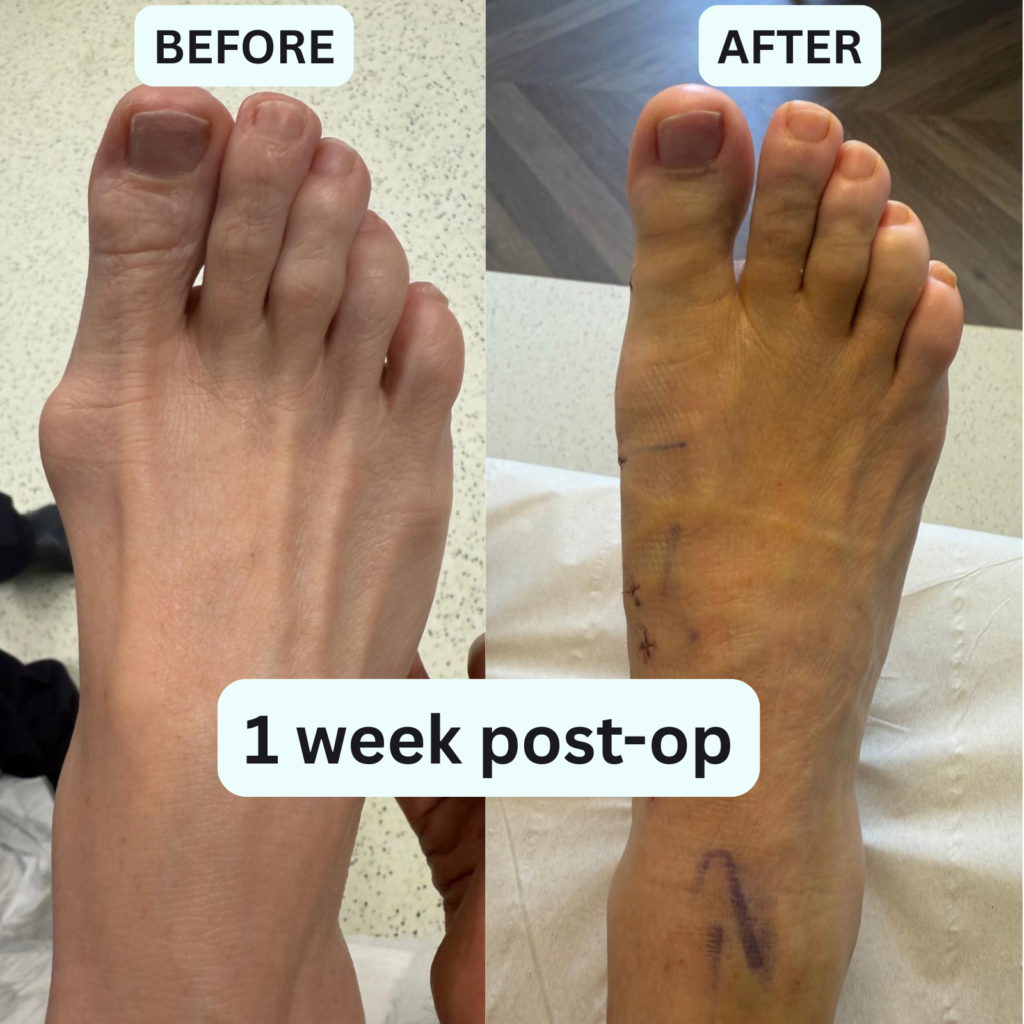
She took pain relief as directed for a couple of days and was also prescribed blood thinners to reduce the risk of DVT due to her recent travel. I prefer to use oral anticoagulants rather than injectable ones. I reviewed her on day six post-operatively, changed her bandages to lighter dressings, and she travelled back to Saudi Arabia the following day.
Recovery, Follow-Up, and Long-Term Results
Upon her return, she received further instructions and continued on blood thinners to minimise the risk of DVT. She stayed in touch with me and confirmed her safe arrival.
I used absorbable stitches for the small portals used during the procedure, which naturally dissolved around two weeks post-op. She was given clear instructions on how to massage the feet and perform range-of-motion exercises, and she had a follow-up consultation with me at three weeks post-operatively.
Her recovery is going very well. She remains mobile, there is minimal swelling, and she has excellent correction. I will be reviewing her again at six weeks post-op, at which point she’ll send through X-rays so I can assess whether the bones have healed adequately and whether she can increase her activity levels.
She plans to return to London around the three-month mark, at which point we’ll likely perform further X-rays to assess bone healing and whether the swelling has fully resolved.
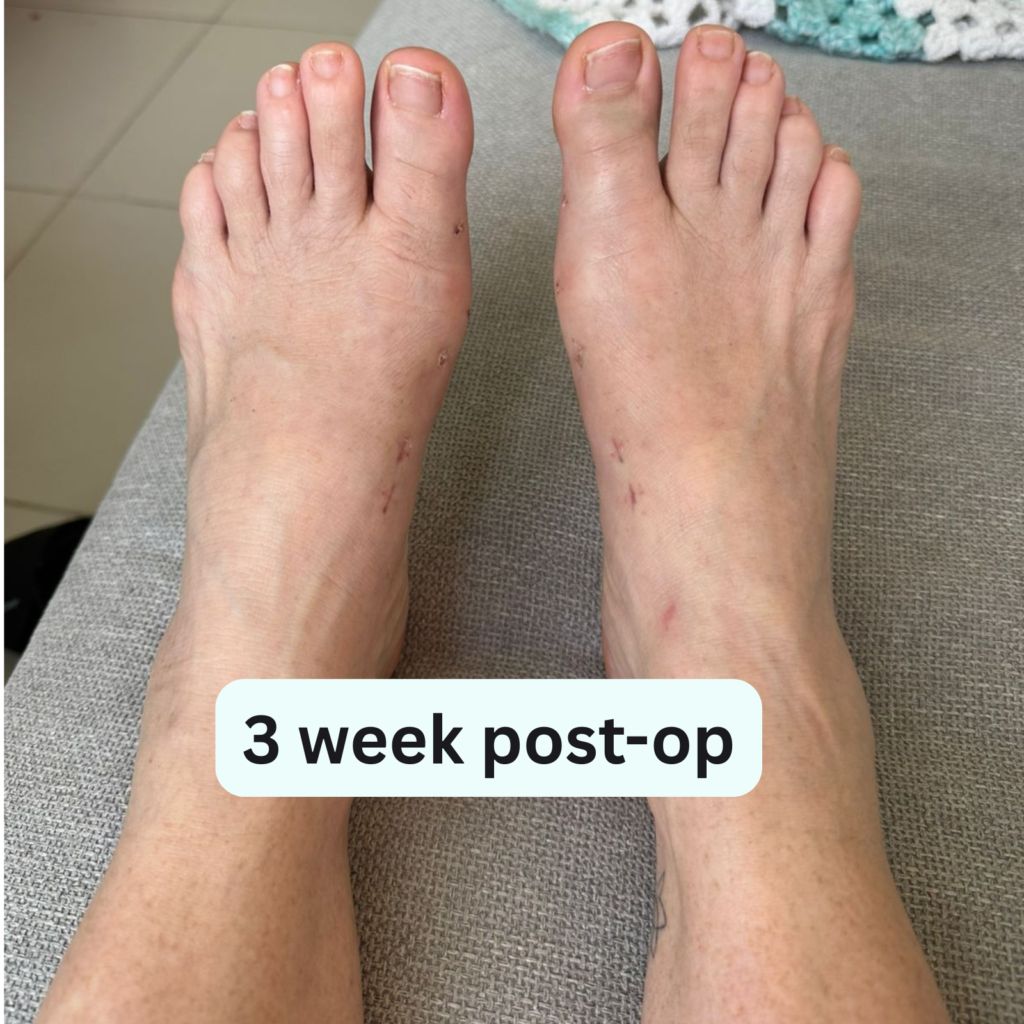
The images show that the procedure was performed using minimally invasive techniques, with minimal swelling and excellent alignment when comparing the pre- and post-operative states. Even at three weeks post-op, although I noted some swelling, it is hardly noticeable to the untrained eye. She is very pleased with the outcome.
A Privilege to Provide International Care
It’s important to share stories like this. I feel incredibly proud that, being based in London—where I believe the standard of care is exceptional—I can offer an international service to patients from around the globe. It is also a privilege to be trusted with their care, and I am truly honoured to provide this service.
This is an interim blog, and I hope to update it over time with the patient’s continued journey, while of course maintaining her confidentiality.
For further information and guidance, we invite you to explore our YouTube channel or contact us here. We look forward to supporting you on your journey to resolving your bunion concerns.
Free Initial Bunion Consultation with Harley Street Expert Surgeon
For a limited time, you can book a complimentary initial bunion chat with leading consultant surgeon Mr. Kaser Nazir at Harley Street, London. Visit our Complimentary Initial Bunion Consultation page and act now.
This is a rare opportunity to meet face-to-face with one of the UK’s most respected bunion surgeons, specialising in minimally invasive bunion surgery. Best of all – it’s completely free.
To secure your place:
- Visit our Complimentary Initial Bunion Consultation
- Join the waiting list for your free consultation
- Take your first step towards pain-free feet
Final Thoughts
If bunions are affecting your comfort, mobility, or confidence, now is the perfect time to seek expert advice – without the usual consultation fee.
This complimentary initial bunion consultation with Mr. Kaser Nazir on Harley Street is your chance to:
- Meet a leading bunion surgeon face-to-face
- Learn about advanced minimally invasive techniques
- Start your journey towards healthier, pain-free feet
✨ Don’t miss this rare opportunity. Book your place on the waiting list today – before all free slots are gone.
